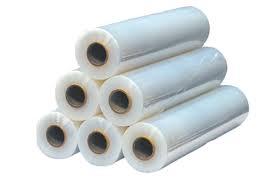Antifog Packaging Films Market Development: Technological Progress and Industry Expansion

The global antifog packaging films market has undergone significant transformation in recent years, evolving from a niche solution to a vital component in modern packaging systems. These specialized films are designed to prevent the formation of condensation or fog on the interior surfaces of transparent packaging — a critical feature for maintaining product visibility, freshness, and hygiene, especially for moisture-rich goods.
As consumer preferences shift toward convenience, sustainability, and visual appeal in packaging, antifog films have found widespread adoption across the food, pharmaceutical, and personal care industries. The market development reflects not just rising demand, but also considerable advances in material science, manufacturing technologies, and regulatory adaptation.
Understanding the Role of Antifog Packaging Films
Antifog films are engineered using additives or coatings that minimize surface tension, thereby dispersing water droplets into a thin, invisible layer. This ensures product visibility, a key requirement in retail environments, especially for items like fresh produce, meat, dairy products, and ready-to-eat meals.
These films are also increasingly used in pharmaceutical packaging where clarity and safety are paramount, particularly in sterile or refrigerated conditions. The development of antifog films has thus become a vital area of innovation in flexible and smart packaging solutions.
Key Drivers of Market Development
1. Rising Demand from the Food Industry
The food packaging sector is the primary driver of antifog film development. With global food consumption and distribution networks growing rapidly, maintaining product quality and shelf appeal is critical. Fog on packaging can lead to consumer rejection, especially for fresh food products where appearance signals quality and freshness.
Modern supermarkets and e-commerce platforms rely heavily on clear packaging that allows customers to see what they’re buying. This visibility is directly tied to purchasing decisions, encouraging manufacturers to adopt antifog films in both primary and secondary packaging.
2. Advancements in Polymer and Coating Technology
The development of antifog packaging films has advanced significantly due to innovations in materials and production methods. Originally dominated by basic polyethylene (PE) and polypropylene (PP) films with simple additives, today’s market includes:
-
Co-extruded multilayer films with built-in antifog properties
-
Water-based and UV-curable coatings that are more environmentally friendly
-
Nanocomposite films that offer additional barrier protection and durability
These innovations not only improve fog resistance but also enhance mechanical strength, shelf life, and environmental sustainability.
Sustainability Driving Film Development
As sustainability becomes a central concern in the packaging industry, antifog films are also evolving to meet new environmental standards. Traditionally, multilayer films have posed recycling challenges, but recent developments are enabling:
-
Mono-material antifog films that are easier to recycle
-
Bio-based antifog additives derived from renewable resources
-
Compostable films for short-life applications in produce and takeaway packaging
Major packaging companies are increasingly investing in green R&D to meet both consumer and regulatory expectations. This sustainability push is accelerating the development of recyclable and biodegradable antifog packaging solutions, contributing to circular economy goals.
Industry Applications Expanding Beyond Food
While the food industry remains the dominant consumer, other sectors are recognizing the value of antifog films:
-
Pharmaceuticals: Ensuring clarity and sterility for refrigerated medicines and diagnostic kits
-
Cosmetics: Maintaining product appeal in humid environments
-
Agriculture: Use in greenhouse films to prevent fog formation that reduces light transmission
These diverse applications are broadening the scope of the market and encouraging the development of industry-specific film formulations.
Regional Development and Market Penetration
Asia-Pacific
Asia-Pacific is leading the global development of antifog packaging films, driven by the rapid growth of food processing industries, increasing urbanization, and rising disposable incomes. Countries like China, India, and Thailand are investing in cold chain infrastructure, further boosting the demand for antifog packaging.
North America and Europe
These mature markets focus heavily on innovation and sustainability. Stricter environmental regulations are pushing the development of recyclable and compostable antifog films, while premium food and health care segments demand high-performance packaging solutions.
Emerging Markets
In Latin America, Africa, and parts of the Middle East, the development of antifog films is at an earlier stage, but growing steadily due to urbanization, changing consumer habits, and improved access to cold storage.
Challenges and Opportunities
Despite the momentum, several challenges remain in antifog film development:
-
Cost barriers for small and mid-sized packaging firms
-
Raw material volatility, especially for petrochemical-based polymers
-
Compatibility with recycling systems, particularly for multi-layer and coated films
However, these hurdles are encouraging innovation. Companies are focusing on developing low-cost, high-performance solutions and eco-friendly alternatives that make antifog technology more accessible and sustainable.
Conclusion: Innovation at the Core of Market Development
The antifog packaging films market is entering a dynamic phase of development, characterized by technological progress, expanding applications, and growing sustainability demands. As industries continue to prioritize product quality, safety, and presentation, antifog films are playing a pivotal role in the evolution of modern packaging.
With ongoing advancements in material science and increased investments in green technology, the market is set to thrive in the years ahead. Stakeholders across the packaging value chain—from raw material suppliers to end-users—stand to benefit from the continuous development of antifog packaging films that meet the needs of today’s consumers and tomorrow’s environmental goals.
- Art
- Causes
- Crafts
- Dance
- Drinks
- Film
- Fitness
- Food
- Games
- Gardening
- Health
- Home
- Literature
- Music
- Networking
- Other
- Party
- Religion
- Shopping
- Sports
- Theater
- Wellness


